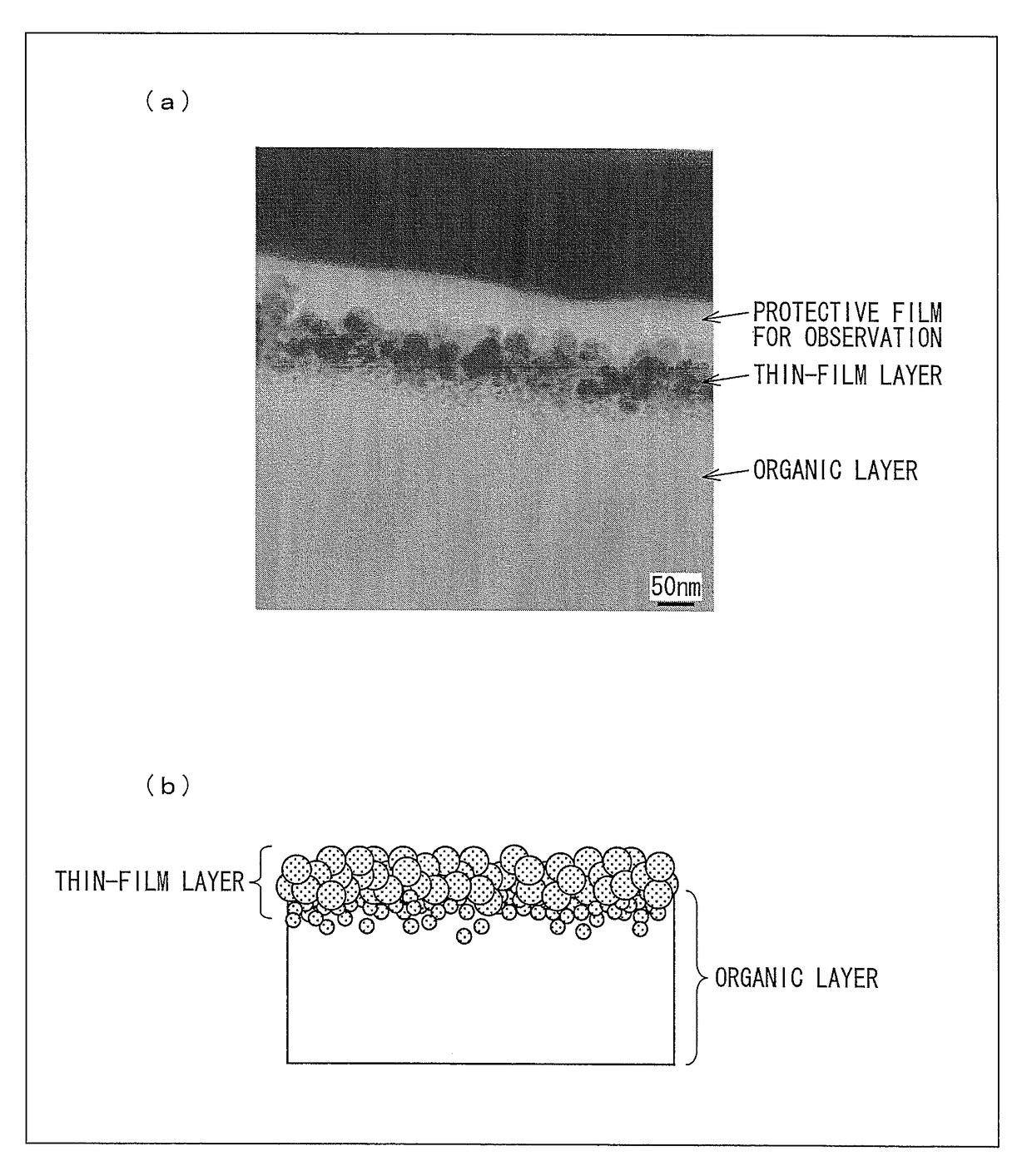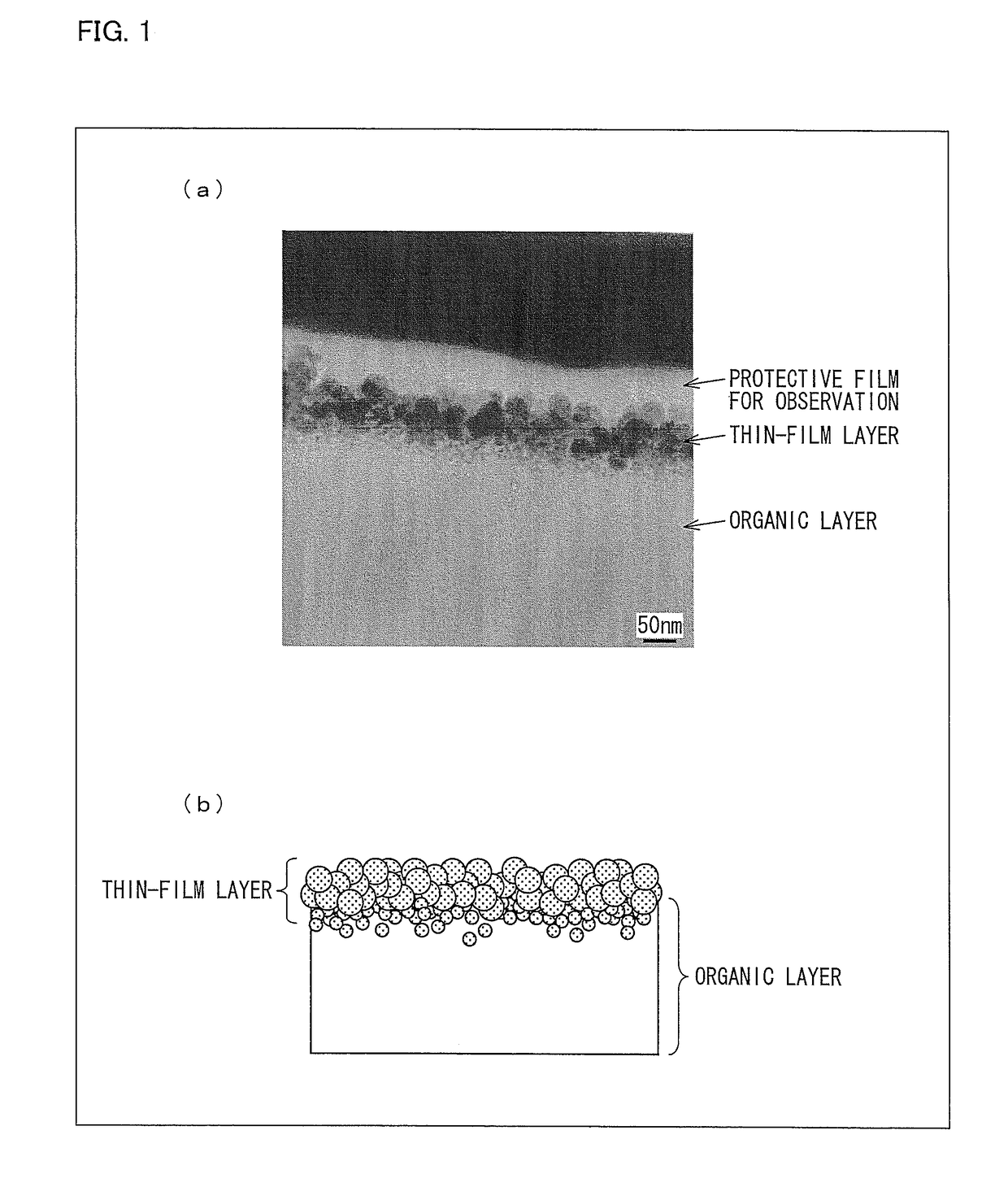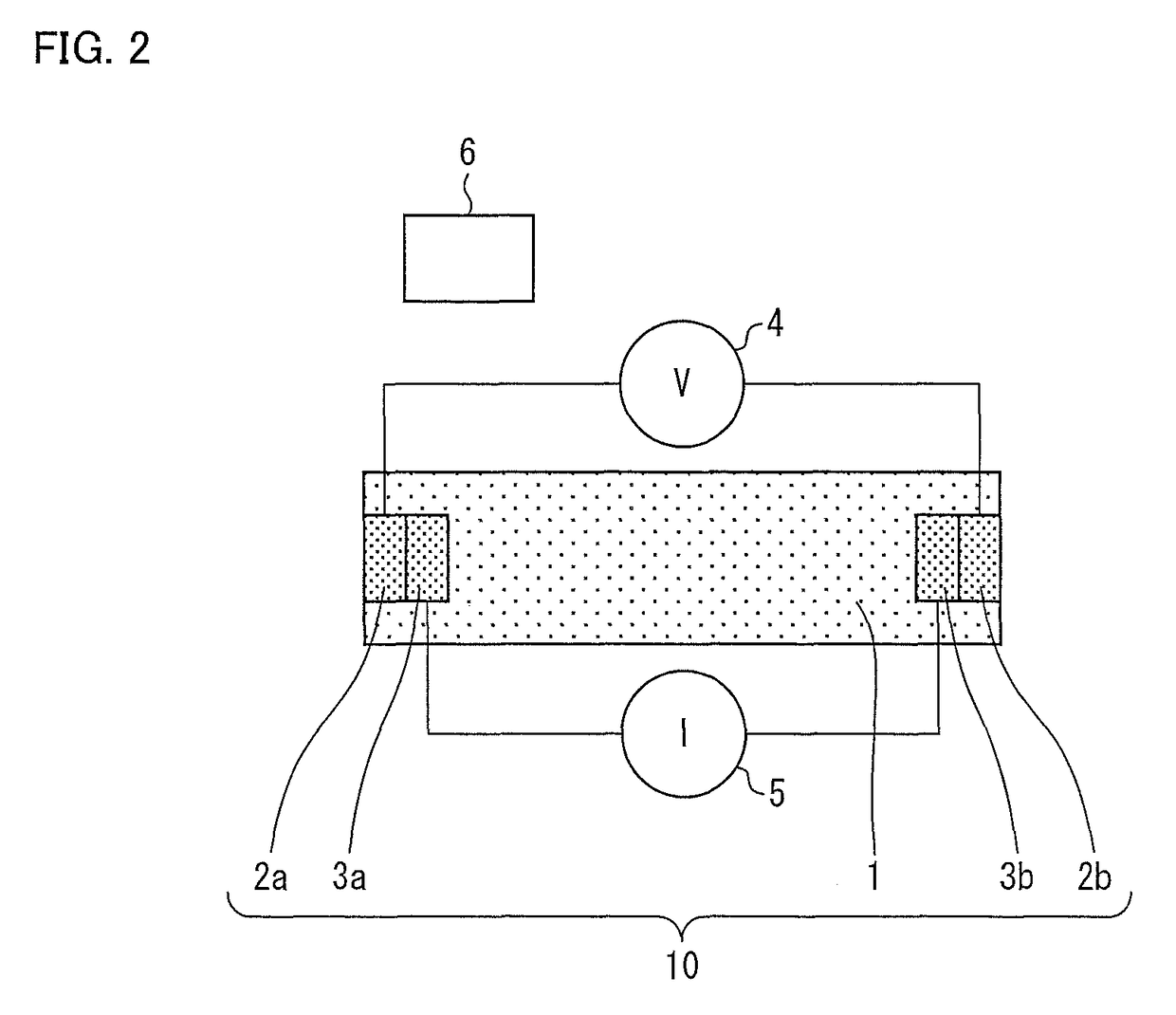Sensor provided with metal oxide film and use thereof
a technology of metal oxide film and sensor, which is applied in the field of sensors including metal oxide film, can solve the problems of high fabrication cost, unsuitability for mass production, and complex process of optical sensors of patent literature 1, and achieve the effect of reducing the size and thickness of the sensor and low-cost fabrication of the sensor
- Summary
- Abstract
- Description
- Claims
- Application Information
AI Technical Summary
Benefits of technology
Problems solved by technology
Method used
Image
Examples
example 1
Preparation of a Primer Composition and Formation of an Organic Film
[0221]As a primer composition, a chemical solution was prepared by mixing 39% by weight of 2-acryloyloxyethyl-phthalic acid (commercially available as HOA-MPL from KYOEISHA CHEMICAL Co., Ltd.), 10% by weight of dimethylaminoethyl methacrylate (commercially available as DM from KYOEISHA CHEMICAL Co., Ltd.), 25% by weight of pentaerythritol acrylate (commercially available as PE-3A from KYOEISHA CHEMICAL Co., Ltd.), 25% by weight of diethyleneglycol dimethacrylate (commercially available as 2EG from KYOEISHA CHEMICAL Co., Ltd.), and 1% by weight of IRGACURE 1173 (manufactured by Ciba Specialty Chemicals, Inc.) as a polymerization reaction initiator so that the total was 100% by weight.
[0222]The 2-acryloyloxyethyl-phthalic acid was used as an addition polymerizable compound including an acid group. Dimethylaminoethyl methacrylate was used as an addition polymerizable compound including a basic group. Pentaerythritol ac...
example 2
Formation of a Metal Thin Film
[0224]A metal thin film was obtained by subjecting, to the following steps, the acrylic sheet on which the organic film had been formed.
(1) The acrylic sheet was immersed in an 8 M aqueous solution of potassium hydroxide at 60° C. and kept there for 2 minutes.
(2) The acrylic sheet was washed thoroughly in distilled water.
[0225](3) The acrylic sheet was immersed in an aqueous solution of metal ions at room temperature and kept there for 10 minutes. The aqueous solution of metal ions was obtained by mixing together a 100 mM aqueous solution of indium chloride and a 100 mM aqueous solution of sodium acetate with a volume ratio of 1:1.
(4) The acrylic sheet was washed thoroughly in distilled water.
(5) The metal ions were reduced by immersing the acrylic sheet in a 100 mM aqueous solution of sodium borohydride at 40° C. and keeping it there for 10 minutes.
(6) The acrylic sheet was washed thoroughly in distilled water.
(7) The acrylic sheet was dried in a nitro...
example 3
Fabrication of a Sensor and Detection of Light Irradiation by the Sensor
[0231]A circuit which has two outer terminals connected to a power supply and which can detect an electric potential difference with two inner terminals was formed by wiring the four terminals with a conductive paste at both ends of the element. FIG. 2 is a schematic view of the appearance of a sensor 10 according to an embodiment of the present invention thus fabricated. In FIG. 2, the reference sign 1 denotes an element including an organic film or an indium oxide film, the reference signs 2a and 2b denote outer terminals, the reference signs 3a and 3b denote inner terminals, the reference sign 4 denotes a voltmeter, the reference sign 5 denotes an ammeter, and the reference sign 6 denotes a light source. The sensor 10 according to one or more embodiments of the present invention includes the element 1, the outer terminals 2a and 2b, and the inner terminals 3a and 3b. It should be noted that in this specificat...
PUM
| Property | Measurement | Unit |
|---|---|---|
| particle diameter | aaaaa | aaaaa |
| temperature | aaaaa | aaaaa |
| thickness | aaaaa | aaaaa |
Abstract
Description
Claims
Application Information
 Login to View More
Login to View More - R&D
- Intellectual Property
- Life Sciences
- Materials
- Tech Scout
- Unparalleled Data Quality
- Higher Quality Content
- 60% Fewer Hallucinations
Browse by: Latest US Patents, China's latest patents, Technical Efficacy Thesaurus, Application Domain, Technology Topic, Popular Technical Reports.
© 2025 PatSnap. All rights reserved.Legal|Privacy policy|Modern Slavery Act Transparency Statement|Sitemap|About US| Contact US: help@patsnap.com



